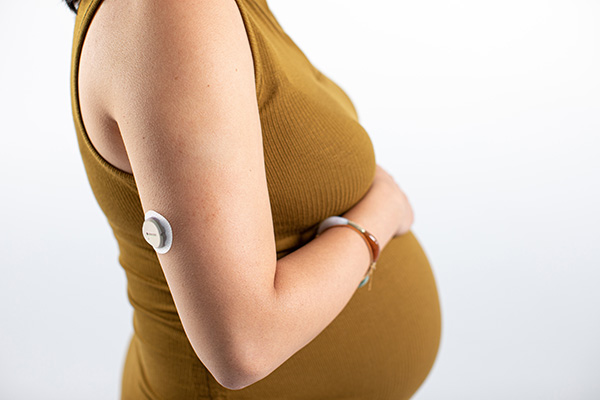2024 ADA Guidelines Recommend rtCGM Technology at Diagnosis and During T1D Pregnancy

The American Diabetes Association recently published the 2024 Standards of Care guidelines, recommending real-time continuous glucose monitoring (rtCGM) as a standard of care for people living with diabetes—including pregnant women with T1D.
Section 7 on diabetes technology highlights the growing evidence around the benefits of rtCGM and Automated Insulin Delivery (AID) systems in diabetes care. The guidelines recommend that rtCGM devices, like Dexcom G7, should be considered as early as the first diagnosis to help individuals reach their A1C targets. The ADA also states that AID should be considered for all adults with type 1 diabetes (T1D)—a new recommendation in 2024.
ADA Recommends rtCGM Should be Considered at Diagnosis
According to recommendation 7.21 in the updated 2024 ADA guidelines, rtCGM technology should be offered to people with T1D early in the disease—even at the time of diagnosis.
The guidelines also recommend that, when prescribing an rtCGM device, individuals and caregivers receive adequate education and training. They should understand how to use the device, how to track their glucose levels, and how to share data with their healthcare provider if needed.
During Pregnancy and Beyond: rtCGM Achieves A1C Targets
Recommendation 7.19 of the new guidelines states that rtCGM devices can help people living with diabetes, including pregnant women, reach their A1C targets.
This recommendation is based on prior data that showed a reduction in A1C levels in pregnant adults with T1D when using rtCGM. The rtCGM device users also experienced more pregnancy-specific time in range (TIR) and less time spent in hyperglycemia.
The benefits of rtCGM use also extend to newborns. The same study found that using rtCGM during pregnancy reduces the number of large-for-gestational-age births, severe neonatal hypoglycemia, and the length of the infant’s hospital stay.
Automated Insulin Delivery Suggested for T1D
Automated Insulin Delivery systems consist of three critical parts: an insulin pump, an algorithm that determines insulin delivery, and an rtCGM device, like Dexcom G7.
The ADA guidelines state that AID systems “should be considered” for all adults with T1D and initiated at an earlier stage, “even at diagnosis.” These new recommendations are substantiated by a combination of scientific and real-world data.
The ADA reports that multiple studies have been done on the benefits of AID systems for adults and children living with diabetes. The results show AID systems can reduce A1C levels, improve TIR, lower the risk of exercise-related hypoglycemia, and even provide psychosocial benefits.
Read the Guidelines to Prescribe rtCGM with Confidence
According to the 2024 ADA guidelines, rtCGM systems, like Dexcom G7, are proven to improve diabetes management. Request samples of Dexcom G7 to experience how real-time continuous glucose monitoring can enhance care. Read Section 7 of the 2024 guidelines to discover the most up-to-date recommendations for diabetes technology.
T1D, type 1 diabetes.
1 American Diabetes Association. Standards of Care in Diabetes. Diabetes Care. 2024;47(Suppl.1):S126–S144. https://doi.org/10.2337/dc24-S007.
2 Feig DS, Donovan LE, Corcoy R, et al.; CONCEPTT Collaborative Group. Continuous glucose monitoring in pregnant women with type 1 diabetes (CONCEPTT): a multicentre international randomized controlled trial. Lancet 2017;390:2347–2359.
MAT-2254
